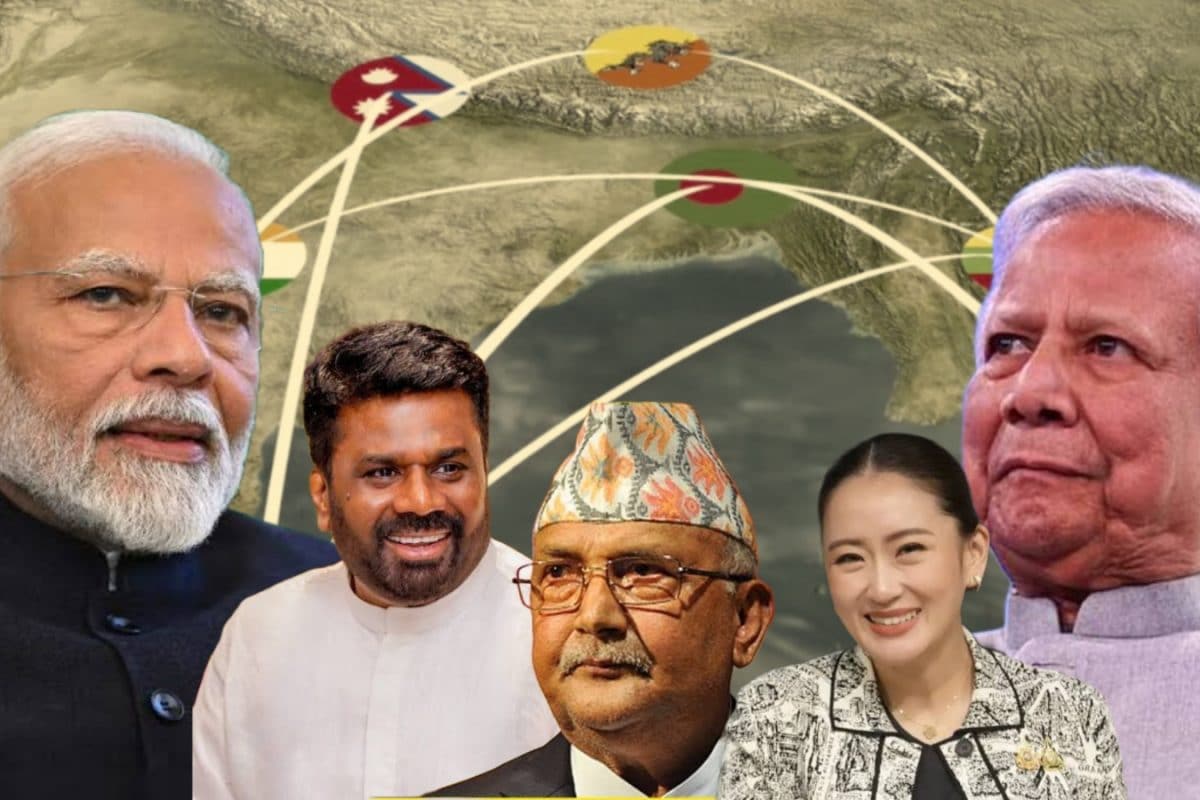BIMSTEC is far more than just an alternative to SAARC. It is where India’s Neighbourhood First and Act East policies converge BIMSTEC—short for the Bay of Bengal Initiative for Multi-Sectoral Technical and Economic Cooperation—comprises seven member states: Bhutan, India, Nepal, Sri Lanka, Myanmar, Bangladesh, and Thailand. The BIMSTEC countries have a combined population of 1.
73 billion people and a GDP of $5.2 trillion. Established in 1997, the bloc was initially known as BIST-EC, including only Bangladesh, India, Sri Lanka, and Thailand.

Myanmar joined later that year, followed by Nepal and Bhutan in 2004. Key agreements to watch out for include the Maritime Transport Cooperation Agreement, set to boost trade and travel across the Bay of Bengal. Other than this, MoUs with the Indian Ocean Rim Association and UNODC (or the United Nations Office on Drugs and Crime) are also in the pipeline and will unlock new partnerships, strengthening regional ties and security.
Every region aspires to come together as a group of nations so that their trade connections deepen, cooperation and assistance in terms of security and technology are enhanced, and their voice on the global stage grows. Europe has the European Union for it. Southeast Asia has the ASEAN.
Africa has the African Union. These are just to name a few. Their mandates may vary in size and scale, just as their outcomes do, but more often than not, they make a dent, and that makes groupings like BIMSTEC worth a shot.
BIMSTEC has been envisioned to emulate the success of ASEAN as an economic bloc and has tremendous potential. Historically, the Bay of Bengal was bustling with trade between India and Southeast Asia, bringing prosperity to kingdoms across the length and breadth of their contiguous coastline. The objectives of the BIMSTEC are to enhance trade and investments, cooperation in energy, transport, technology, counterterrorism, and so on.
Notice that Pakistan is not a part of this group. Pakistan had its chance with SAARC, the South Asian Association for Regional Cooperation, but tensions with India, which disapproves of its terror-wielding hand, have rendered SAARC a dud in the world of multilateral politics. BIMSTEC is often seen as a regional alternative to SAARC, but is not limited to it, as it is also a bridge between the subcontinent and the larger Southeast Asian region.
BIMSTEC is where India’s Neighbourhood First and Act East policies converge, forming an important component of its larger role in the Indo-Pacific. As the largest member of the bloc, India has a plethora of responsibilities and opportunities to drive prosperity in the region. New Delhi understands this well, which is why India covers most of BIMSTEC’s expenses.
While BIMSTEC presents opportunities, it’s yet to optimally harness its strengths. The frequency of in-person meetings between heads and ministers is inconsistent, and breakthroughs in this group have been few and far between. BIMSTEC sells two main dreams— free trade and free movement.
For two decades now, BIMSTEC nations have been negotiating on a free trade deal, but with little progress. When it comes to transport, though, things are moving, with India driving the progress. The India-Myanmar-Thailand Trilateral Highway is one such example.
This is a road spanning 3200km and connects Moreh in Manipur with Mae Sot in Thailand through Myanmar. Of course, the civil war in Myanmar has done no favours to this project. India, however, remains deeply invested and confident that a proper, uninterrupted land link between India’s Northeast and Thailand and further east, is possible.
In fact, 2027 is the estimated year of the project’s completion. Another important project is the Kaladan Multi-Modal Transit Transport Project (KMMTTP), which aims to connect Kolkata Port in India to Sittwe Port in Myanmar and then to Mizoram through land and inland water routes. There is also the Motor Vehicle Agreement between India, Bhutan, Nepal, and Bangladesh to allow for the free flow of vehicles with minimum roadblocks.
Talks are on to make the free movement of commercial vehicles in the entire BIMSTEC subregion with a single permit. While connectivity is key, India is also pushing for a preferential trade agreement, which could serve as a precursor to a Free Trade Agreement. It’s also enhancing security and energy cooperation.
The MoU for grid interconnections among member nations and the BIMSTEC energy centre established in Bengaluru, India, are all stepping stones in that direction. India already has strong energy ties with Bhutan, Nepal, Bangladesh and Sri Lanka, and can expand further east. Addressing the elephant in the room—Bangladesh.
Dhaka, home to the BIMSTEC Secretariat, was one of the grouping’s founding members in 1997. At the time, Sheikh Hasina had just risen to power as Prime Minister and maintained friendly ties with India. She upheld her father, Sheikh Mujibur Rahman’s vision for a prosperous Bay of Bengal region, working closely with India.
But today, the situation is starkly different. Instead of embracing its role in BIMSTEC, Bangladesh’s current leadership is in disarray. Sheikh Hasina has been ousted.
Muhammad Yunus, the Chief Advisor to its caretaker government, is busy cosying up to China. A particular statement by Yunus in Beijing, in fact, rubbed India the wrong way. He marketed Bangladesh as an attractive option to China, highlighting the landlocked nature of India’s Northeastern states and Bangladesh’s supposed regional dominance in relation to them.
The statement wasn’t just flawed and problematic, but it had a menacing tone and revealed Yunus’s posture towards India. Yunus has requested a meeting with PM Modi, but India has yet to respond. Tensions are evident between India and this unelected government, which relies on the support of Islamist parties, has fuelled anti-India sentiment, and is marred by widespread attacks on religious minorities.
At best, we can expect a pull aside, where the two leaders can exchange greetings briefly. That in itself would be a major breakthrough. All in all, BIMSTEC has the potential to integrate the region, enhancing trade and connectivity, and bringing prosperity to each nation, big and small.
This is, however, hinged upon peace, trust and unity. BIMSTEC is not ineffective like SAARC, but it is also not as dynamic and impactful as ASEAN. Building upon its charter, if the bloc can formalise further, form legal frameworks, deepen security cooperation to boost trust, and meet annually to boost activity and progress, the future holds promise.
Views expressed in the above piece are personal and solely those of the author. They do not necessarily reflect News18’s views..
Politics

PM Modi’s Thailand Visit: Can India Change The Regional Game With BIMSTEC? | Finepoint

BIMSTEC is far more than just an alternative to SAARC. It is where India’s Neighbourhood First and Act East policies converge














